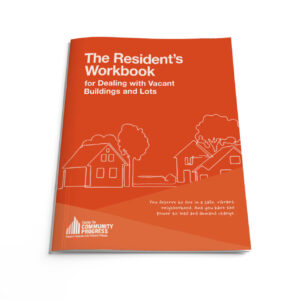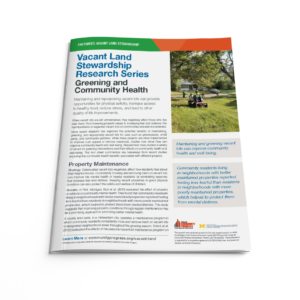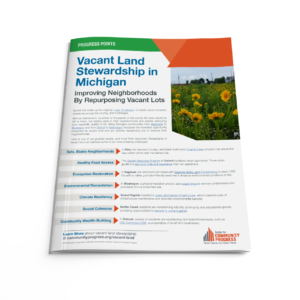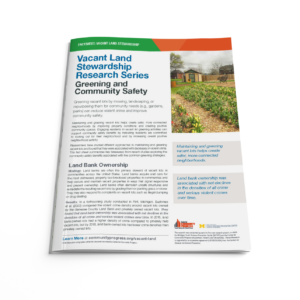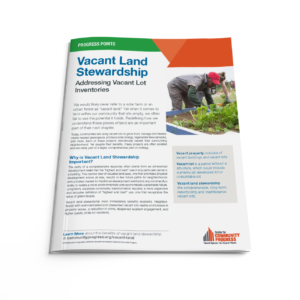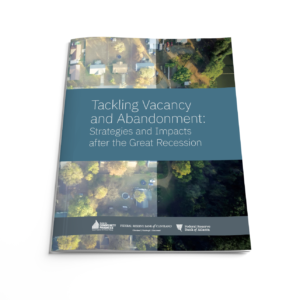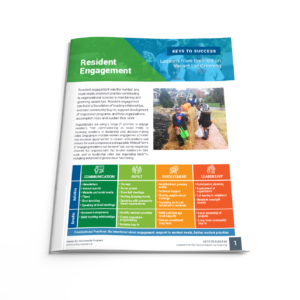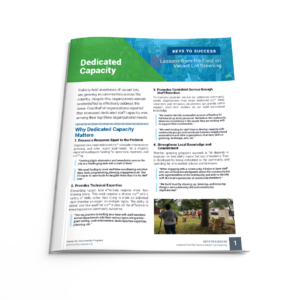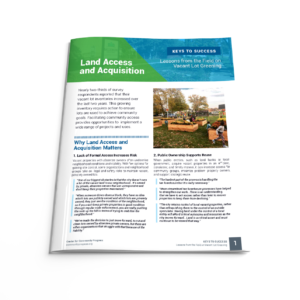Publications
Vacant Land Stewardship
A Memo to the Flint Non-Structural Blight Work Group
Outcomes of the Flint Non-Structural Blight Work Group and next steps Flint can take in stewarding its inventory of vacant land.
Read More »for Dealing with Vacant Buildings and Lots
A workbook and guide and workbook for residents who want to help address problem properties in their neighborhoods.
Read More »Vacant Land Stewardship Research Series
Stabilizing vacant lots through cleanups and regular maintenance can help to reduce the harms of unmaintained vacant land on mental and physical health.
Read More »Improving Neighborhoods by Repurposing Vacant Lots
This one-page brief explains what you need to know about why taking care of vacant lots can improve Michigan neighborhoods.
Read More »Vacant Land Stewardship Research Series
This fact sheet summarizes key takeaways from recent studies exploring the community safety benefits associated with five common greening strategies.
Read More »A Brief Primer
Download a one-page explainer on what vacant land stewardship is, and why it’s important.
Read More »Strategies and Impacts after the Great Recession
Ten years on from the Great Recession, we take stock of lessons learned from that crisis and how they might be applied to future challenges. This edited volume, jointly produced by Community Progress and the Federal Reserve Banks of Atlanta and Cleveland, contains twelve articles by national experts in the field of neighborhood revitalization.
Read More »Insights from the National Survey on Greening
In this brief from Keys to Success, you’ll find an explainer on the most-endorsed practice contributing to successful vacant lot maintenance: resident engagement.
Read More »Insights from the National Survey on Greening
In this brief from Keys to Success, we dive into the capacity challenge facing organizations responsible for vacant land stewardship, and why a response equal to the scope of the problem is necessary.
Read More »Insights from the National Survey on Greening
In this brief from Keys to Success, we explore how formal access and acquisition programs are critical for successful vacant land stewardship.
Read More »